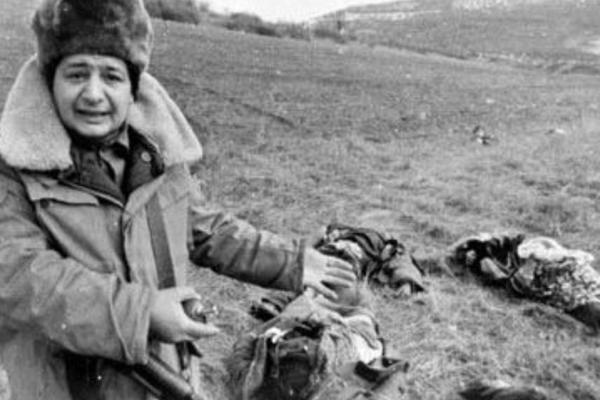Sufferings of Azerbaijani children etched in history
Maryana Ahmadova


Photo by Chingiz Mustafayev
On the night of Feb. 26, 1992, the most terrible massacre of the first Karabakh war occurred. The Khojaly genocide, as it is called, claimed the lives of hundreds of innocent Azerbaijani people. The Armenian armed forces, who launched an assault on the Azerbaijani city of Khojaly, didn’t show any mercy to women, the elderly, or children.
Many journalists and photographers both from Azerbaijan and all over the world revealed the horrific images of this genocide -- the New York Times, TIME magazine, The Independent, and many others covered this horrific story.
In particular, the footage shot by famous Azerbaijani journalist Chingiz Mustafayev was to become one of the most memorable ones related to the Khojaly genocide. And that footage shocked the whole world. It was obvious that those innocent civilians who were trying to escape and died on the way were the victims of this brutal massacre.
Even though the so-called “corridor” was created for the residents of Khojaly to leave the city, those people were attacked on the way. As a result of the massacre, 613 civilians were killed, including 106 women, 63 children and 70 elderly people; 1,000 people were wounded due to brutal torture; and 1,275 were captured. Many of the residents of the city went missing, and their fate remains unknown to this day.
The sad reality is that when armed conflicts happen, children, as the most vulnerable members of society, suffer the most from the consequences of military actions. After eight Azerbaijani families were massacred, 25 Azerbaijani children were left without both parents, 130 children lost one of their parents, and 76 children sustained various injuries.
A documentary called “They will never grow up,” dedicated to the children of Khojaly, created with the assistance of the Council of State Support to NGOs under the President of Azerbaijan and the Recognition of Armenian Aggression Public Union, described the stories of those who were able to survive this massacre.
What happened in Khojaly 31 years ago during the first Karabakh war grossly contradict the U.N. Declaration on the Protection of Women and Children in Emergency Situations and Armed Conflict. This is just one part of the ethnic cleansing the Armenian armed forces have been carrying out against Azerbaijani people.
Nevertheless, even when the peace with Armenians is achieved, Azerbaijan will never be able to accept this pain and loss brought upon its people. Those bloody chapters of the history will be remembered forever.
*Maryana Ahmadova is the head of the English News Service at Trend News Agency.
